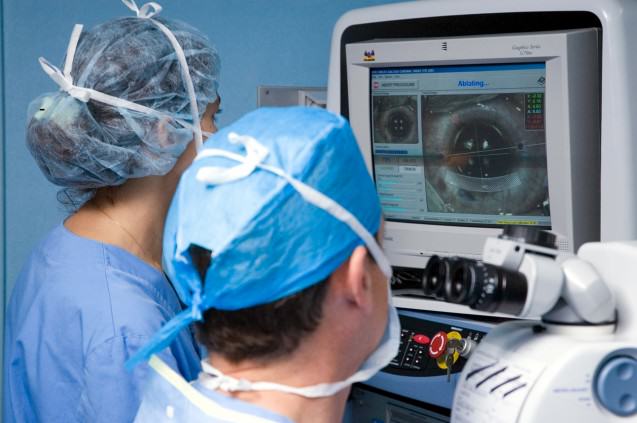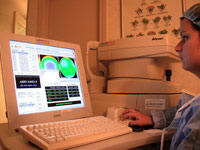Myopia, Hyperopia and Astigmatism
At the Amigó Ophthalmology Institute we have developed refractive surgery since 1992.
| These three defects can be treated by refractive surgery whatever their strength in
dioptres. However, the refractive surgeon must decide if surgery is a suitable option for the person, and what is the most appropriate technique to stop needing to constantly use glasses or contact lenses. Among the most important factors to consider in making this decision are :
|
Therefore, at our clinic before advising you, the quality of the eye will be evaluated by different specific tests and a complete ophthalmic examination. Finally, a personal interview with the surgeon will decide whether your expectations are realistic and you are a suitable candidate for refractive surgery or the operation is simply not recommendable.Our goal is quality of vision throughout their entire lives.
The techniques most often utilised are the Excimer laser, different types of intraocular lenses, peripheral corneal incisions and intracorneal rings. On occasion we suggest the combination of two or more of these techniques. |
Correction of Short- and Long-sightedness, and Astigmatism
| These optical defects are called refractive errors. Refractive surgery is the speciality through which these defects are corrected and a refractive surgeon is an ophthalmologist specialised in such operations.
Dioptres are the units in which we measure the ability of the eye to focus images properly. Short-sightedness (myopia) is the most common refractive error and implies having excessive dioptres. That is, too much focusing power of the eye, causing the image to be permanently targeted too close. For this reason myopic people see well up close and are normally called short-sighted, since without glasses they cannot see well more than a short distance away. |
Long-sightedness (hyperopia or hypermetropia) is the opposite of myopia, in which the eye has insufficient focusing power (dioptres) and it is difficult to see clearly near at hand and also but less so, at a distance. Unlike in short-sight, when we are young the eyes can compensate, often seeing well without glasses. With age this compensation mechanism becomes weaker (presbyopia) and most people first begin to have trouble with near vision, and then later also at a distance.Astigmatism is essentially a lack of uniformity in the shape of the eye that often accompanies short or long sight. All these errors can be treated by refractive surgery, whatever the dioptre measurement, but it is the task of the refractive surgeon to decide if they are suitable for surgery or not and what is the most appropriate technique, so as to stop needing glasses or contact lenses.
Different techniques of refractive surgery. The decision of which technique is best for you depends on several factors such as the characteristics of your eye, the type of defect, the number of dioptres, age and your own expectations. The most common techniques are (LASIK) and different types of intraocular lenses. |
For more information on the correction of refractive errors, refer to the respective sections of this website: |
Return to specialties |
Find out more about aspects of myopia, hyperopia and astigmatism in our blog.


